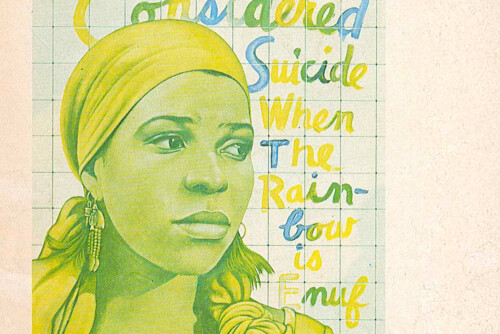“Plain Looks and Chubby Body”: Trans Studies in Taiwan
In 2003, Dr. Josephine Ho (何春蕤), director of the Center for the Study of Sexualities at National Central University in Taiwan, embarked on a series of lectures to call for increased trans rights activism and, specifically, for the creation of trans studies programs in universities across the Asia Pacific region. As the director of her own Center for the Study of Sexualities, she gives the “developing governance of mainstream feminist gender politics in Taiwan” as the reason for this transgender turn.1 In one lecture, Ho explains that “heightened gender consciousness rigidified into an institutionalized gender framework”—that is, legislative gender equality—has actually made social existence more difficult for the “differently gendered.”2 She goes on to say that “essentializing tendencies in the identity politics of feminism as well as […] that of the newly formed gay and lesbian movements” are also reflected in the “limited narratives that make up […] transgender cultural representation” within activist circles and in the popular media.3 Ho therefore attempts to mobilize trans studies both as a response to the extreme gender conformity generated by the dominance of nationalist feminism in Taiwan and as the true sign of Taiwanese modernity and progressivism in matters of sexual and gender politics.
Ho’s lectures were also catalyzed by the suicide of a well-known male-to-female (MTF) transsexual activist in Taiwan named Lin Guo-Hua (林國華) in 2003, five years after Lin’s own transition. Ho uses this anecdote regularly in her writings to illustrate the unlivableness of trans life in Taiwan despite access to medical transition. Upon closer inspection, however, there seems to something slightly off—as well as off-putting—about the way in which Ho interprets Lin’s life and death. Quoting Lin’s psychiatrist, Ho writes that “she had been told by many that her plain looks and chubby body figure ‘would not make a successful woman,’ but she “insisted on going through with the surgery.”4 Ho then concludes that Lin killed herself in a hotel room out of desperation because she was unable to support herself by finding and keeping a job. Ho explains, “trans subjects whose physical endowment (in facial features, body figure, height, etc.) makes it difficult for them to exhibit normative gender image and gender performance in their adopted gender role will consistently encounter immense obstacles in the most mundane details of daily life, whether before or after transition.”5 By referring to some preexisting state of “physical endowment,” however, Ho implies and indeed concurs with the psychiatrist on the point that Lin had trouble obtaining employment not simply because of her gender identity, but rather as result of her physical attractiveness—that is, her lack of attractiveness as a woman held to normative standards of beauty.
The problem here, in Ho’s recounting, is surprisingly not societal; it is not the lack of trans workplace protections and safeguards against employment discrimination in Taiwan that makes trans lives unlivable. Instead, her implicit characterization of Lin as an unattractive transwoman underscores the structural violence that is perpetuated by forcible SRS and reveals how gendered and sexist oppression can be reproduced through the very process of removing procreative abilities from trans bodies. In a footnote added to the text of her lecture at Ochanomizu University in Japan in 2003, Ho states:
Although sex reassignment surgery can be performed upon confirmation with two different psychological evaluations, Taiwanese surgeons often make it a rule that the patient’s parents must sign an agreement before surgery is performed for fear that the uninformed parents may bring mutilation charges against the surgeon afterwards. This requirement, established more for the protection of surgeons than for any other reason, has become the biggest obstacle for male-to-female transsexuals seeking sex reassignment, whose parents are bound by traditional Chinese values that tend to see such acts as either castration or more importantly the breaking-off of family lineage. Such obstacles have forced many male-to-female transsexuals to go for surgery in Thailand where no such requirement stands. This may be one reason why Taiwan’s sex reassignment surgery is unusually more advanced in female-to-male cases where the surgeons had more chance for practice.6
Ho’s description of the medical technologies of SRS that are accessible in the region reveals that a familiar, orientalist notion of female abjection continues to ground the discourse of Asian modernity, whose exemplary subject for Ho may, in fact, be the trans citizen. The relative value of male over female reproductive sex organs goes unquestioned in her treatment of the all-important family lineage, while female-to-male or transmasculine individuals are cast as expendable daughters and, therefore, suitable candidates for surgery. What Ho does not mention here is that the transmasculine SRS procedures honed by willing Taiwanese surgeons are also likely sharpening the surgeons’s skills at male enhancement surgery, e.g., metoidioplasty (which entails the release of the supensory ligament of the clitoris/penis), as these operations have been popularized throughout the region in recent decades precisely in response to social anxiety over male fertility and family lineage.
Between her implicit praise of Taiwan’s SRS industry and her comments about Lin Guo-Hua’s less-than-successful gender presentation and her subsequent suicide, Ho’s performance of trans activism reveals that the forms of female abjection which are constituted in and through orientalism can and do have an impact on trans discourse. In spite of Ho’s comments elsewhere about the similarities between the practice of identity politics in Taiwan and in the “West,” what needs to be acknowledged is how trans studies in the Asia Pacific region might manifest its own internal divisions. Indeed, in yet another footnote to this lecture, Ho explains that Taiwanese queers turned to the usage of Western abbreviations like TG (or CD for cross-dresser and TS for transsexual) in place of the previous umbrella identity marker, “third sex,” precisely at a time when the growth of Taiwanese tourism to Thailand raised mainstream awareness about “third sex” drag shows.7 This was done, she implies, to distance an emergent Taiwanese trans rights movement from the stigma attached to the sex work industry. (A legalized form of sex work that disproportionately involved indigenous women was a central piece of Taiwan’s own history of political repression).
Ho’s short aside thus illuminates more aspects of the biopolitics and the necropolitics of trans embodiment in the Asia Pacific region, with Thailand portrayed as a place where sex workers are medically constructed, and Taiwan represented as a testing ground for masculinizing surgeries and, indeed, where reportedly two-thirds of all gender-confirming procedures are performed on transmasculine subjects. Her feminist framing of Taiwan’s advances in gender-confirming technologies becomes even more important as new scholarship emerges on Xie Jianshun, the first known recipient of SRS in Taiwan. A contemporary of Christine Jorgensen (who became the first widely known American trans woman when she returned from medical treatment in Denmark in 1952), Xie has been hailed as the “Chinese Christine” by Howard Chiang, whose project to reconstruct Xie’s history seeks to portray her as “a transsexual cultural icon whose fate would indisputably contribute to the global staging of Taiwan on par with the United States” in the postwar period during which the island state was known as “Free China.”8 Whereas Xie’s iconicity is tied to the triumphant founding of the Republic, however, Lin’s tragedy is taken as a sign of how Taiwanese modernity has failed its most vulnerable—or perhaps its plainest—subjects.
- Josephine Ho, “The Em[bodi]ment of Identity: Constructing the Transgender.” 4 July 2003. [↩]
- Ho 2003. [↩]
- Ho 2003: par. 3. [↩]
- Cited in “Embodying Gender: Transgender Body/Subject Formations in Taiwan,” Inter-Asia Cultural Studies, 7.2 (2006): 347. [↩]
- “Embodying Gender” 2006: 348-89. [↩]
- “The Em[bodi]ment of Identity”: n5. [↩]
- “The Em[bodi]ment of Identity”: n4. [↩]
- Howard Chiang, “Sinophone Production and Trans Postcoloniality: Sex Change from Major to Minor Transnational China,” English Language Notes, 49.1 (2011): 112. [↩]





